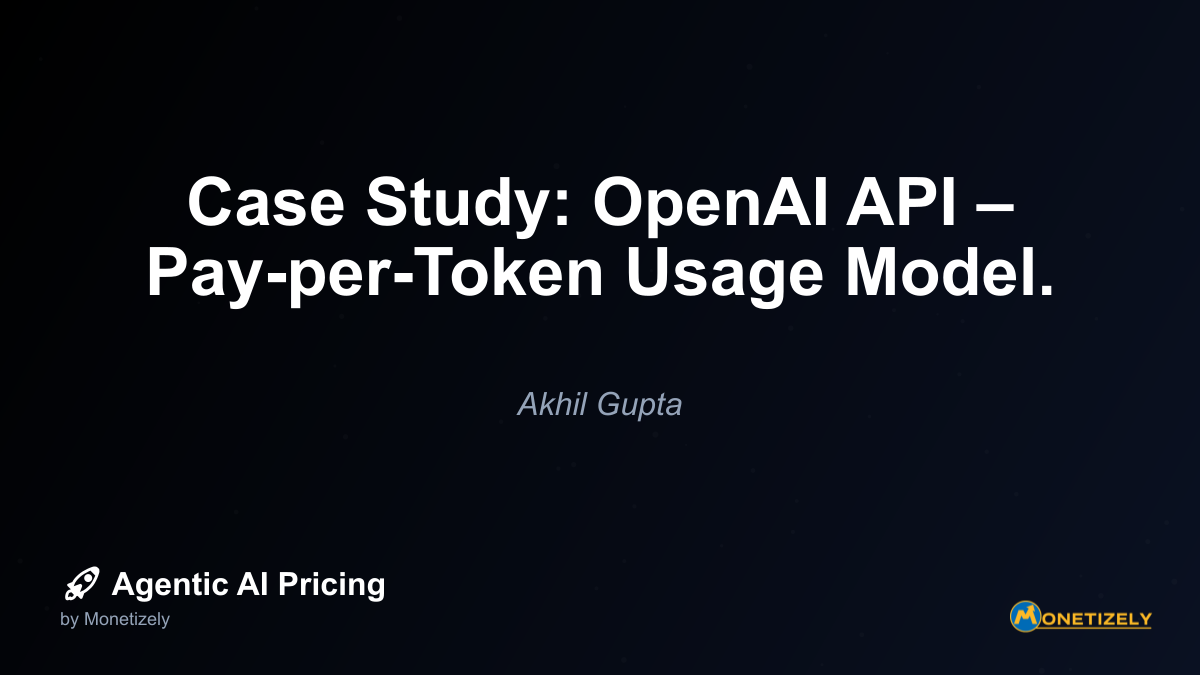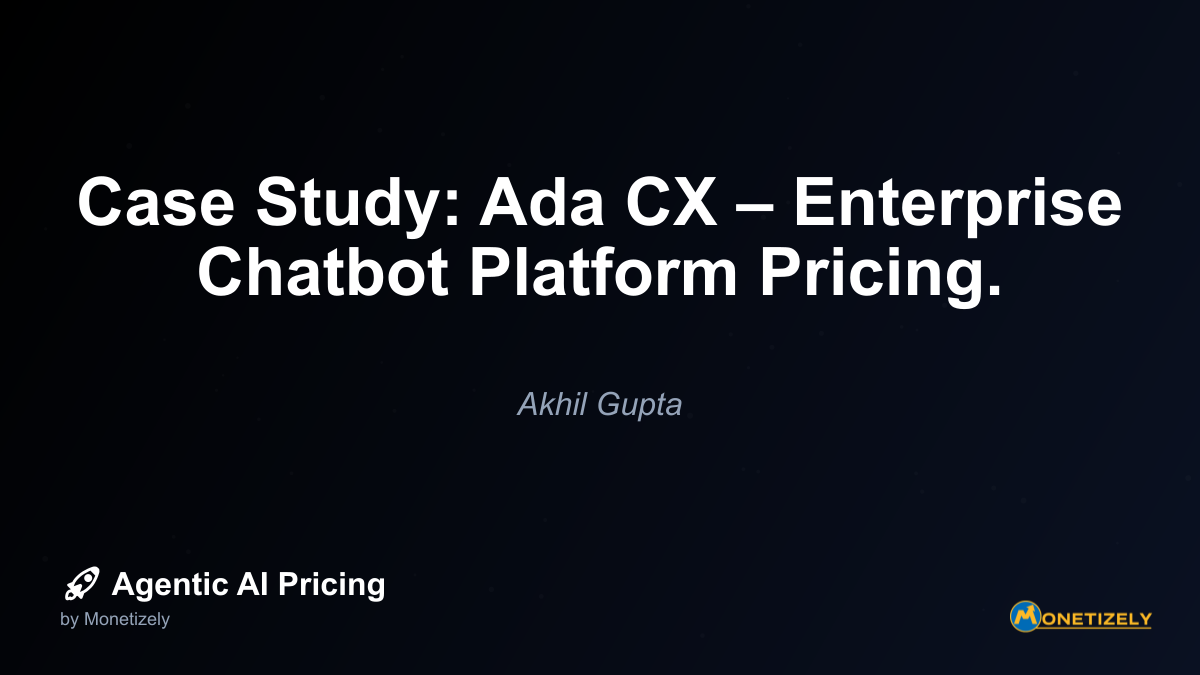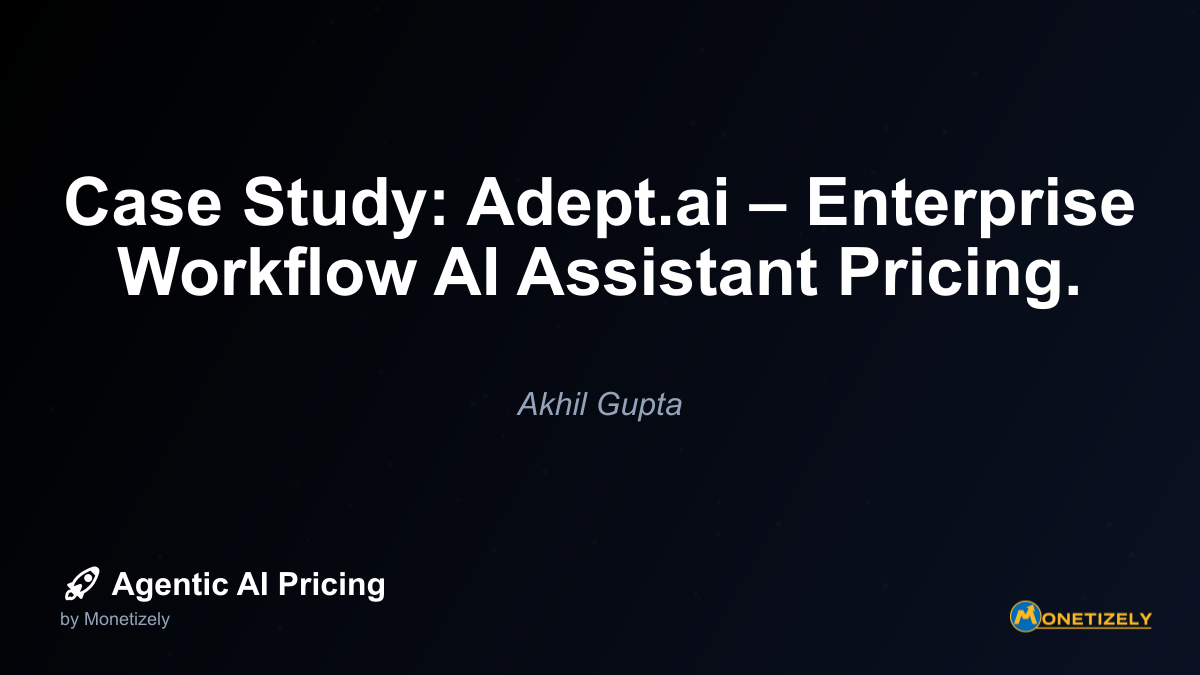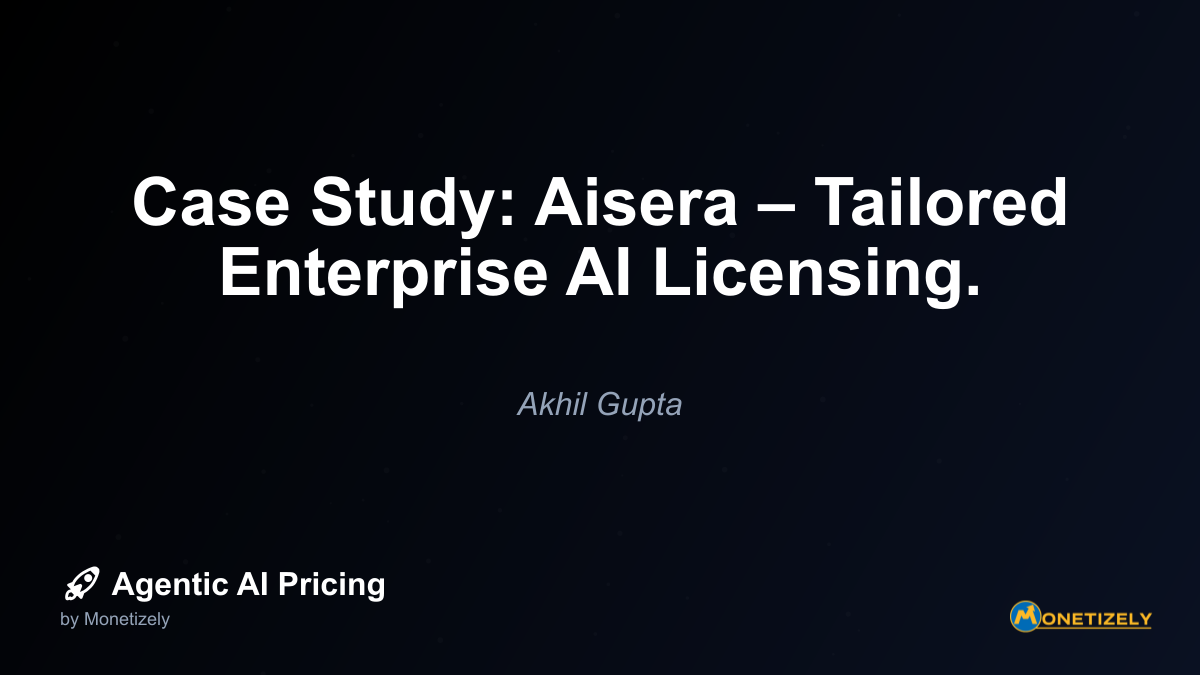· Akhil Gupta · Case Studies · 10 min read
Case Study: OpenAI API – Pay-per-Token Usage Model.
AI and SaaS Pricing Masterclass
Learn the art of strategic pricing directly from industry experts. Our comprehensive course provides frameworks and methodologies for optimizing your pricing strategy in the evolving AI landscape. Earn a professional certification that can be imported directly to your LinkedIn profile.

Volume Discounts and Enterprise Pricing
While OpenAI’s published pricing is available to all users, the company also offers volume discounts for high-usage customers. This creates a natural incentive for customers to consolidate their AI usage with OpenAI rather than splitting it across multiple providers.
For enterprise customers with specific requirements around security, compliance, and support, OpenAI offers custom pricing packages that may include dedicated capacity, service level agreements, and enhanced support options. This tiered approach allows OpenAI to capture additional value from customers who derive greater benefits from the service.
The Business Logic Behind Token-Based Pricing
OpenAI’s token-based pricing model isn’t arbitrary - it’s carefully designed to align with both their business requirements and customer expectations. Let’s examine the strategic reasoning behind this approach:
Aligning Cost with Resource Consumption
The computational resources required to run large language models like GPT-4 are substantial. By charging per token, OpenAI creates a direct correlation between customer usage and the underlying costs of delivering the service. This ensures that heavy users pay proportionally more than light users, reflecting their greater consumption of computational resources.
This alignment is particularly important given the significant infrastructure investments required to train and run state-of-the-art AI models. The token-based model helps OpenAI maintain profitability while scaling to serve millions of API requests daily.
Enabling Accessibility Across Customer Segments
One of the most significant advantages of usage-based pricing is its inherent accessibility. By eliminating upfront costs or minimum commitments, OpenAI has made its technology available to a wide range of users - from individual developers experimenting with AI to large enterprises building mission-critical applications.
This accessibility has been instrumental in driving adoption and fostering innovation across the AI ecosystem. Startups can begin using OpenAI’s models with minimal financial risk, while larger organizations can scale their usage as their applications mature.
For a deeper analysis of token-based versus subscription models for AI services, this resource provides valuable insights into the tradeoffs.Promoting Efficient Usage Patterns
The token-based pricing model inherently incentivizes efficient usage. Developers are motivated to optimize their prompts and application logic to minimize token consumption, which benefits both the customer (lower costs) and OpenAI (reduced resource utilization).
This efficiency incentive has led to the emergence of best practices around prompt engineering and context management, as developers seek to extract maximum value from each token. The community has developed techniques to reduce token usage while maintaining output quality, such as:
- Crafting concise, well-structured prompts
- Implementing client-side caching to avoid redundant requests
- Using compression techniques to reduce token count
- Leveraging fine-tuning to improve model efficiency
Implementation Challenges and Solutions
While OpenAI’s token-based pricing model offers many advantages, it also presents implementation challenges for both OpenAI and its customers. Understanding these challenges provides insight into the complexities of usage-based pricing for AI services.
Predictability and Budgeting Concerns
For customers, one of the primary challenges of token-based pricing is cost predictability. Unlike fixed subscription models where costs are known in advance, usage-based pricing can lead to unexpected expenses if token consumption spikes.
To address this concern, OpenAI has implemented several features:
Usage Monitoring: Real-time dashboards allow customers to track their token consumption and associated costs.
Rate Limits and Quotas: Customers can set usage limits to prevent unexpected cost overruns.
Cost Estimation Tools: OpenAI provides tools to help developers estimate token counts and potential costs during development.
These features help customers maintain control over their spending while still benefiting from the flexibility of usage-based pricing.
Billing Infrastructure Requirements
For OpenAI, implementing token-based pricing requires sophisticated billing infrastructure capable of tracking billions of token transactions across millions of API calls. This includes:
- Metering Systems: Accurately counting tokens for each API request
- Real-time Usage Tracking: Monitoring consumption patterns across customers
- Billing Integration: Connecting usage data with payment processing systems
- Reporting Tools: Providing customers with transparent usage information
The investment in this infrastructure is substantial but necessary to support the token-based model. OpenAI has gradually enhanced these capabilities, adding features like organization-level billing, usage analytics, and cost allocation tools.
Market Impact and Competitive Response
OpenAI’s token-based pricing model has had a significant impact on the AI service market, influencing how competitors structure their own offerings and setting customer expectations for how AI services should be priced.
Setting Industry Standards
The token-based approach has emerged as something of an industry standard, with many competing services adopting similar models. Companies like Anthropic (with Claude), Cohere, and AI21 Labs have all implemented token-based pricing for their language model APIs, though with variations in their specific rate structures.
This convergence suggests that the token-based model effectively addresses the core requirements of both service providers and customers in the AI API market. It provides a fair way to allocate costs based on usage while enabling accessibility across customer segments.
Competitive Differentiation
While many competitors have adopted token-based pricing, they’ve also sought to differentiate their offerings in various ways:
Lower Rates: Some providers offer lower per-token rates to compete on price.
Simplified Structures: Some eliminate the distinction between input and output tokens to reduce complexity.
Bundled Options: Others combine token-based pricing with subscription tiers that include token allocations.
Specialized Models: Some focus on domain-specific models with pricing optimized for particular use cases.
These variations highlight the ongoing evolution of pricing models in the AI service market, with providers experimenting to find the optimal balance between simplicity, fairness, and competitiveness.
This comparative analysis of AI model pricing across providers offers valuable context on how OpenAI’s approach compares to alternatives.Business Outcomes and Success Metrics
The effectiveness of OpenAI’s token-based pricing model can be evaluated through several key business outcomes:
Rapid Market Adoption
Since launching its API with the token-based model, OpenAI has seen explosive growth in adoption. The accessibility of the pay-as-you-go approach has enabled developers to experiment with the technology with minimal financial commitment, leading to widespread integration across applications and industries.
This broad adoption has created a virtuous cycle, with more developers using the API, providing more feedback, and enabling OpenAI to improve its models and services.
Revenue Scaling with Usage
The token-based model has allowed OpenAI’s revenue to scale directly with usage. As customers build more sophisticated applications and attract more users, their token consumption increases, driving corresponding revenue growth for OpenAI without requiring changes to the pricing model.
This automatic scaling is particularly valuable in a rapidly evolving market where predicting customer usage patterns is challenging. The token-based approach ensures that OpenAI captures value proportional to the utility its service provides.
Customer Satisfaction and Retention
The fairness inherent in usage-based pricing has contributed to high levels of customer satisfaction and retention. Customers appreciate paying only for what they use, with costs that scale in proportion to the value they derive from the service.
This alignment between cost and value has helped OpenAI maintain strong relationships with its customer base, even as it has adjusted specific token rates over time to reflect changes in its cost structure and competitive positioning.
Lessons for Other AI Service Providers
OpenAI’s token-based pricing model offers valuable lessons for other companies developing AI services, particularly those building agentic AI solutions:
Align Pricing with Cost Drivers
The most fundamental lesson is the importance of aligning pricing with underlying cost drivers. For AI services, computational resources are typically the primary cost, making usage-based metrics like token count a natural basis for pricing.
This alignment ensures that pricing remains sustainable as the service scales, with revenue growing in proportion to costs. It also creates fairness across the customer base, with each customer paying in accordance with the resources they consume.
Balance Simplicity with Precision
While OpenAI’s token-based model is conceptually straightforward, its implementation includes nuances like different rates for different models and separate pricing for input and output tokens. This balance between simplicity and precision is crucial for usage-based pricing.
Too much simplicity can lead to pricing inefficiencies, while too much complexity can confuse customers and create friction in the purchasing process. Finding the right balance requires understanding customer preferences and competitive dynamics.
Provide Tools for Cost Management
For usage-based pricing to succeed, customers need tools to manage and predict their costs. OpenAI’s investments in usage tracking, rate limiting, and cost estimation features have been essential to customer acceptance of the token-based model.
Other AI service providers should similarly prioritize developing tools that help customers understand and control their spending, reducing the uncertainty that can sometimes discourage adoption of usage-based pricing.
Consider Hybrid Approaches
While OpenAI has primarily relied on pure usage-based pricing, there may be opportunities to combine this approach with subscription elements for certain customer segments. Some customers may prefer the predictability of subscription pricing, even if it means potentially paying for unused capacity.
A hybrid approach that offers both usage-based options and subscription tiers with included usage allowances can address diverse customer preferences while maintaining the fundamental benefits of usage-based pricing.
Future Evolution of OpenAI’s Pricing Model
As the AI service market continues to evolve, OpenAI’s pricing model is likely to adapt in response to changing market conditions, customer needs, and competitive pressures. Several potential directions for future evolution include:
Greater Granularity in Resource Measurement
While tokens provide a reasonable proxy for computational resource consumption, they don’t perfectly capture all aspects of resource utilization. Future pricing models might incorporate additional factors such as:
- Computational complexity of specific requests
- Memory usage for maintaining context
- Priority levels for request processing
- Specialized capabilities like function calling or tool use
This increased granularity could enable more precise alignment between pricing and costs, though it would need to be balanced against the added complexity.
Expanded Enterprise Offerings
As enterprise adoption of AI continues to grow, OpenAI may further develop its enterprise pricing tiers to address specific requirements around security, compliance, and integration. This could include:
- Dedicated infrastructure options
- Enhanced SLAs with performance guarantees
- Volume-based discounting tiers
- Custom model adaptation services
These enterprise-focused offerings would complement the existing token-based model while capturing additional value from customers with specialized needs.
Bundled Solutions and Industry-Specific Pricing
As the market matures, OpenAI might develop more specialized pricing models for particular industries or use cases. This could include bundled solutions that combine API access with industry-specific models, integration support, and specialized tools.
Such bundled approaches could simplify adoption for customers in specific verticals while potentially increasing OpenAI’s average revenue per customer.
Conclusion
OpenAI’s token-based pricing model represents a sophisticated approach to monetizing AI capabilities in a way that balances accessibility, fairness, and business sustainability. By charging based on token usage, OpenAI has created a direct relationship between the value customers receive and the price they pay, while enabling adoption across a wide range of customer segments.
The success of this model demonstrates the power of usage-based pricing for technologies with variable resource consumption and diverse usage patterns. It has established a template that many other AI service providers have followed, with variations to address specific market segments and competitive dynamics.
For businesses developing their own AI pricing strategies, OpenAI’s approach offers valuable lessons about aligning pricing with cost drivers, balancing simplicity with precision, and providing customers with the tools they need to manage their costs effectively. While not every aspect of OpenAI’s model will be applicable to all AI services, the core principles of usage-based pricing provide a solid foundation for monetizing AI capabilities in a sustainable and customer-friendly way.
As the AI service market continues to evolve, we can expect OpenAI and its competitors to refine their pricing approaches further, potentially incorporating greater granularity, more specialized options for enterprise customers, and bundled solutions for specific industries. Throughout this evolution, the fundamental principle of aligning price with value is likely to remain central to successful AI pricing strategies.
Co-Founder & COO
Akhil is an Engineering leader with over 16+ years of experience in building, managing and scaling web-scale, high throughput enterprise applications and teams. He has worked with and led technology teams at FabAlley, BuildSupply and Healthians. He is a graduate from Delhi College of Engineering and UC Berkeley certified CTO.
Pricing Strategy Audit
Let our experts analyze your current pricing strategy and identify opportunities for improvement. Our data-driven assessment will help you unlock untapped revenue potential and optimize your AI pricing approach.




